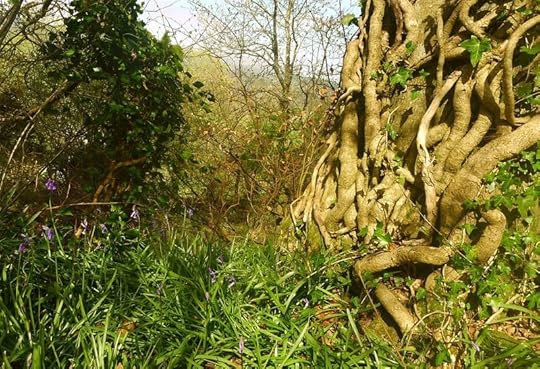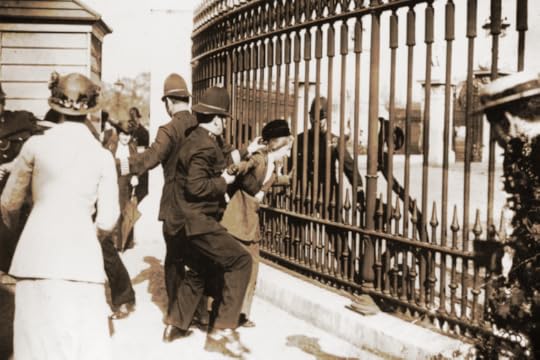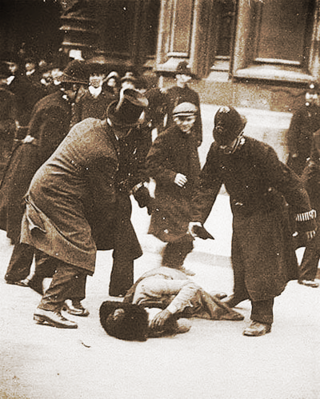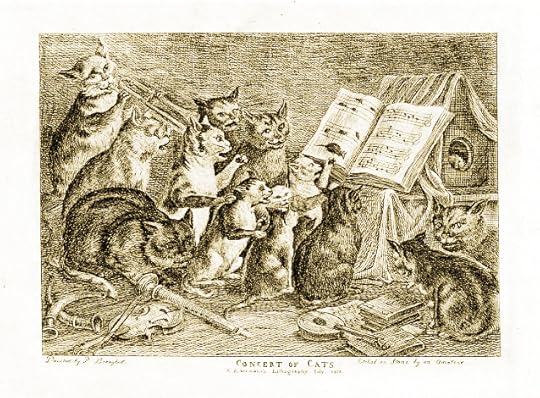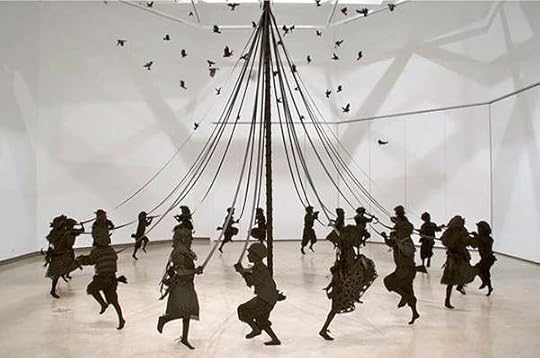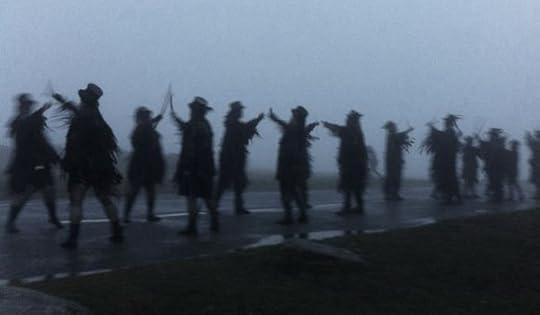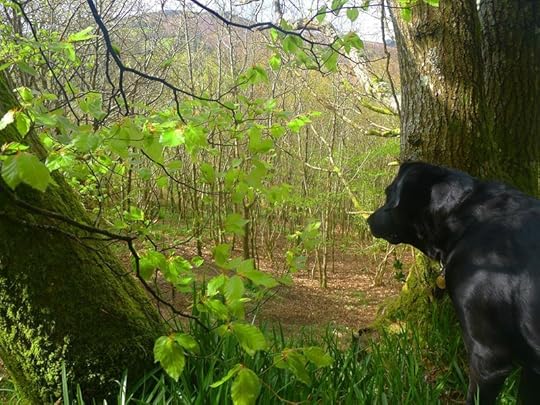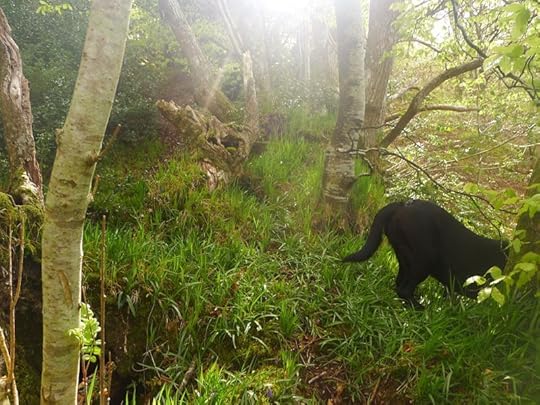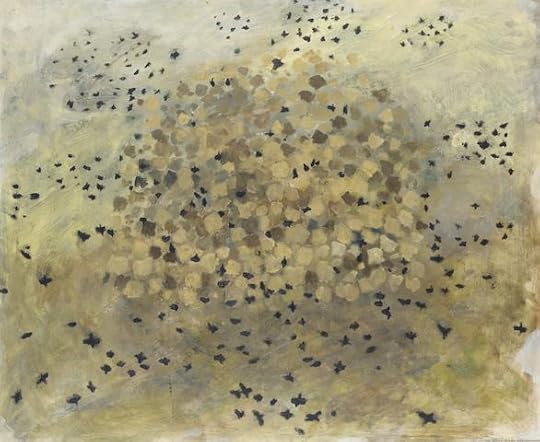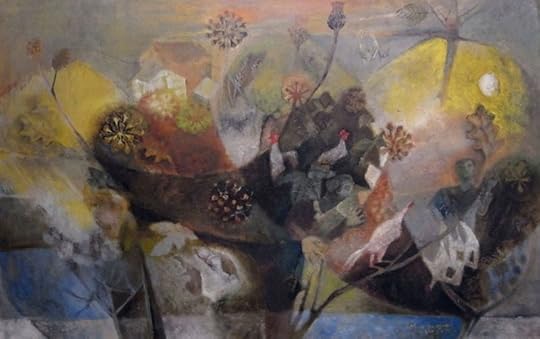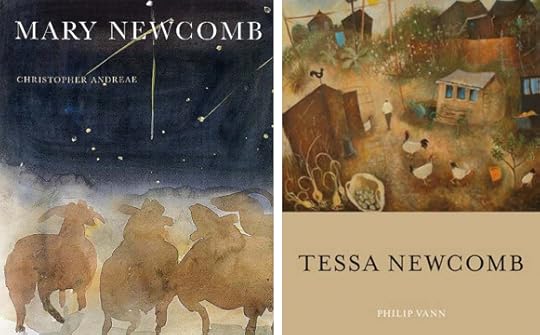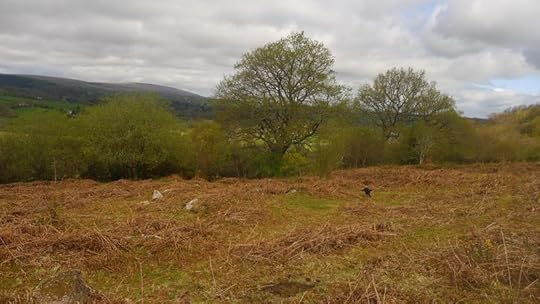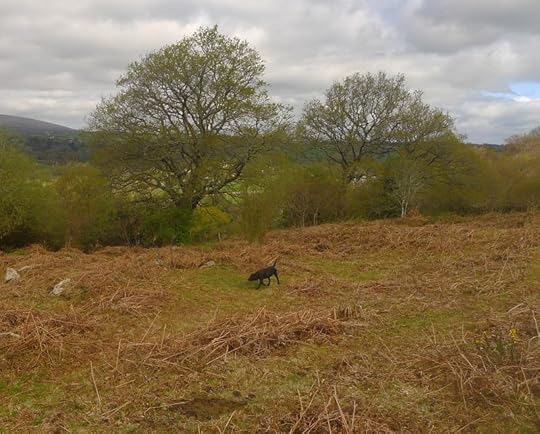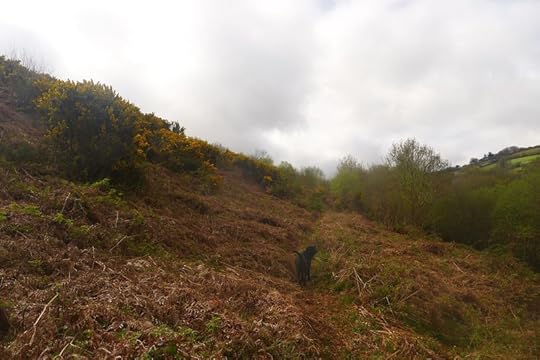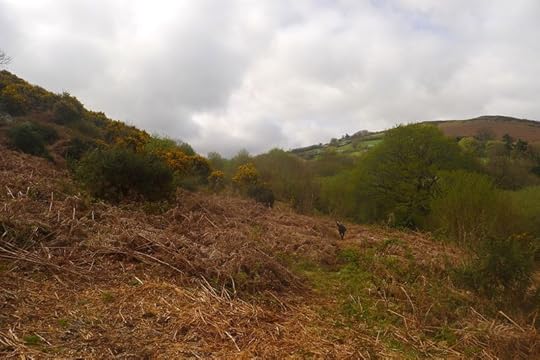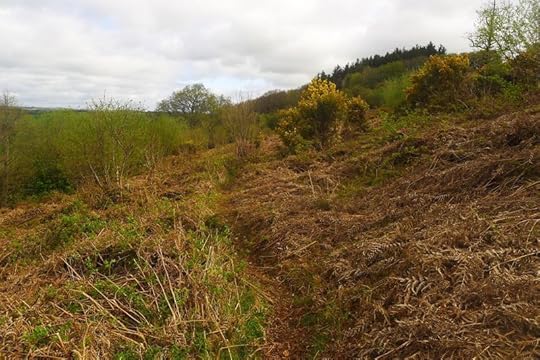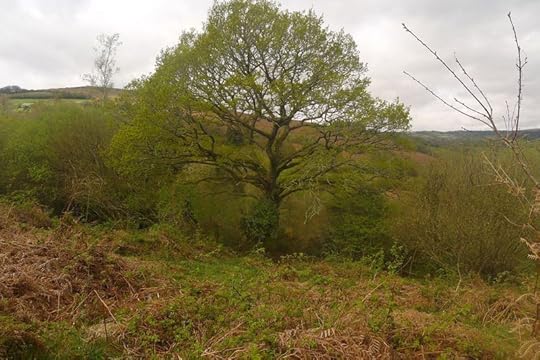Terri Windling's Blog, page 138
May 7, 2015
Myth & Moor update
Thanks for your patience everyone. Although it's only a sprained ankle I've been dealing with, it's amazing how immobility throws everything else out of whack -- particularly as I've been unable to climb the hill up to my office/studio. But the ankle is on the mend and I hope to be back to a regular posting schedule next week.
Election Day
"I am unjust, but I can strive for justice.
My life’s unkind, but I can vote for kindness.
I, the unloving, say life should be lovely.
I, that am blind, cry out against my blindness."
- Vachel Lindsay (1879-1931)
If you live in the UK, please vote today. Our right to do so -- as women, as non-land-owners and working class men, as Catholics, as Jews, as people of color -- was very, very hard won. We all stand on the shoulders of giants.
Vote for justice. Vote for kindness. Vote.
May 6, 2015
Recommended Reading
Some quick reading recommendations for you while I'm indisposed:
* Photos of UK writers' houses: Jane Austen, the Brontes, Frances Hodgson Burnett, Lucy Boston, Agatha Christie and more (Guardian Books). I want to visit them all.
* Tracy McVeigh looks at the re-wilding movement in Great Britain; and George Monbiot, author of Feral, celebrates the return of British otters (Guardian Wildlife).
* Artist Chris Maynard pens a beautiful essay on "Why I Find Feathers Alluring" (Center for Humans & Nature blog).
* Artist Jackie Morris explains how she fell in love with peregrine falcons (Guardian Books).
* Stuart Kelly appreciates the very magical work of Bill Willingham (Guardian Books).
* Maria Tatar discusses the enduring appeal of Peter Pan (Huffington Post).
* Elizabeth Svoboda reflects on the power of story (Aeon Magazine).
* Cory Doctorow gives some excellent writing advice (Locus Magazine online).
* And finally, sadly, a beautiful eulogy for Charles Bowden (1945-2014) by Richard Grant. Chuck Bowden was a tough and brilliant Tucson writer whose work I've admired for many years: Blue Desert, Desierto, Frog Mountain Blues, Seasons of the Coyote, and so many other fine books. There was absolutely no one else like him, and he will be deeply missed. (Aeon Magazine)
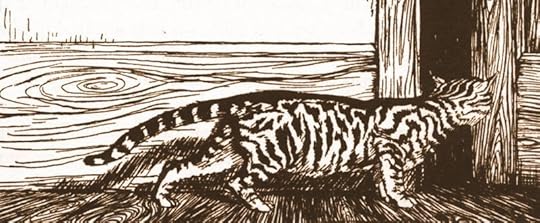 Art above: "Concert of Cats," a 19th century etching after Bruegel (via Bibliophila), and a cat sketch by Arthur Rackham. These are for Stuart, Phyllis, Valerianna, and other cat fans here. But don't tell Tilly.
Art above: "Concert of Cats," a 19th century etching after Bruegel (via Bibliophila), and a cat sketch by Arthur Rackham. These are for Stuart, Phyllis, Valerianna, and other cat fans here. But don't tell Tilly.
May 5, 2015
Myth & Moor update
"Accidents are not accidents but precise arrivals at the wrong right time." - Serbian poet and essayist Dejan Stojanović
Gentle readers: As you may already know from reading comments on yesterday's post, I've been immobilized by a sprained ankle -- and I've also lost some important work time due to wooziness from shock-aftermath and pain medication. It's all feeling a bit better today, so I'm going to try going med-free in order to catch up again. I'll be back to Myth & Moor once my writing & editing commitments are met. Thanks for your patience, and your kind messages.
The painting above is by Carl Larsson (1853-1919).
May 3, 2015
Tunes for a Monday Morning
Telling the Bees has just released their third album, Steer by the Stars, and it's thoroughly gorgeous. Featuring ten brilliant new songs by my friend and neighbor Andy Letcher (with bandmates Jane Griffiths, Jim Penny, Josie Webber, and Colin Fletcher), plus enchanting art by another friend and neighbor, Rima Staines, I highly recommend it to fans of innovative folk music and folkloric arts.
Please visit the Telling the Bees website for more information on the band and their work. Their name comes from the old English custom of "telling the bees" about deaths, births, marriages, and other important events in their keeper's lives. It is also the name of a classic poem by John Greenleaf Whittier.
If I had to pick a favorite song from Steer by the Stars, it would be "A Puppeteer Came to Town" -- reminding me as it does of the puppet show below (created by Andy, Rima, my husband Howard, and artist Nomi McLeod) -- but all of the songs are wonderful. Listen to three more pieces from the album here and you'll see what I mean.
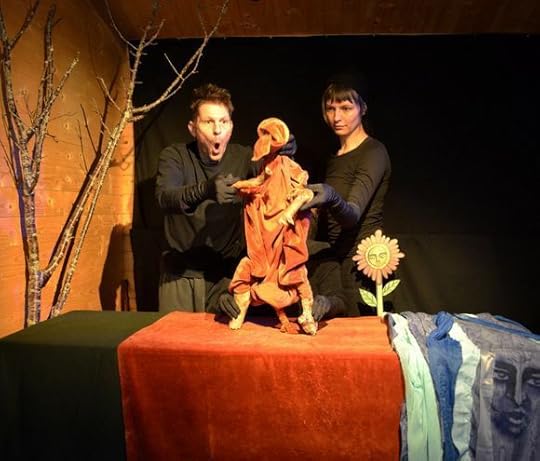 "How the Hoggler Got Its Name" by DreamGrubber Theatre, Chagford
"How the Hoggler Got Its Name" by DreamGrubber Theatre, Chagford
There are no videos for the new album yet, so here is "Blackbird" from two years ago. Enjoy.

Art above: Telling the Bees album art by Rima Staines, and "Telling the Bees" by Charles Napier Hemy (1841-1917).
May 1, 2015
Happy May Day!
As with most traditions rooted in our pagan past, folklorists have conflicting views about the origins of the various May Day customs practiced in the British Isles today, containing as they do a mixture of Celtic and Norse influences combined with theatrical flourishes introduced by British antiquarians of the 18th and 19th centuries.
In the Germanic tradition, Walpurgis Night, on April 30th, is a moon festival sacred to the goddess Freya, "Walpurga" being one of her names. The re-dedication of the holiday to "St. Walpurga" was a later Christian addition. Freya is generally known today as the goddess of love and beauty in Norse mythology (as opposed to Freja, goddess of marriage and family), but she was more complex and more interesting than that: not a virgin maiden but a figure representing women's magic, sexuality, and independence -- as well as, in her dark aspect, a patron deity of war and death in battle. She wears a cloak of falcon feathers and the magical gold necklace called Brísingamen, and rides in a chariot pulled by cats, the sacred boar Hildisvíni at her side. Maypole dancing comes down to us from the rites of spring dedicated to Freya, although the pole was originally a living tree representing Yggdrasill, the enormous ash tree that is the great "world tree" of Norse cosmology.
In the British Isles, Beltane, celebrated on May 1st, is a moon festival that falls midway between the Spring Equinox and Summer Soltice, marking the return of light and summer, the fertility of the land ensured by  the mating and hand-fasting of the Great Goddess and her consort. (For many years the Christian church sought to ban May Day festivities because of this "lewd" context as a frank celebration of sexuality and fecundity.) Recorded evidence of Maypole Dancing goes back at least to the 14th century, the texts suggesting the custom was very old even then, although the form of the dance known best today, with decorative children dancing in village squares, owes as much to the romanticism of the Victorians as it does to ancient tradition.
the mating and hand-fasting of the Great Goddess and her consort. (For many years the Christian church sought to ban May Day festivities because of this "lewd" context as a frank celebration of sexuality and fecundity.) Recorded evidence of Maypole Dancing goes back at least to the 14th century, the texts suggesting the custom was very old even then, although the form of the dance known best today, with decorative children dancing in village squares, owes as much to the romanticism of the Victorians as it does to ancient tradition.
The name "Beltane" derives from Bel, the Celtic god of fire, honored and propitiated with bonfires lit on sacred hills. Smoke from the fire blessed the fields, animals, and community, and maintained the wary, careful balance between the human and faery realms. "Traditionally," writes Glennie Kindred (in Sacred Celebrations), "all fires in the community were put out and a special fire was kindled for Beltane. This was the Teineigen, the 'need fire.' People jumped the fire to purify, cleanse and to bring fertility. Couples jumped the fire together to pledge themselves to each other. Cattle and other animals were driven through the smoke as a protection from disease and to bring fertility. At the end of the evening, the villagers would take some of the Teineigen to start their fires anew."
May Day customs vary across Britain, but are generally less elaborate than in past times, when entire villages were festooned with greenery and flowers: boughs of rowan, birch, and ivy, and May Blossoms (from hawthorn trees). Beltane ceremonies are on the rise again, but in a few places around the country they have never really stopped -- the 'Obby 'Oss festivities in Cornwall being one well-known example.
 Here in Chagford, we're reviving May Day folk customs with a traditional Jack in the Green procession, complete with a 'Obby 'Oss of our own, and I'll share photos of the day with you when I return to Myth & Moor next week. (It's a long holiday weekend here in Britain, so I'll be back in the studio again on Tuesday.) In the meantime, you can read about the Jack in the Green and other woodland myths in my previous post on "Wild Folklore," and about other Beltane rites across Britain in an informative article published in the Telegraph. Also, have a look at ‘Tis the Season to Be Blooming, a charming collection of spring festival photographs from National Geographic's archives, and film clips of Padstow's 'Obby 'Oss celebration in 1930 and 1951. And be sure to light a fire tonight (a bonfire is best, but a candle will work too) in order to bless the months ahead, protect you from faery mischief, and connect you with the folkloric past that we all share, no matter what our ethnic background.
Here in Chagford, we're reviving May Day folk customs with a traditional Jack in the Green procession, complete with a 'Obby 'Oss of our own, and I'll share photos of the day with you when I return to Myth & Moor next week. (It's a long holiday weekend here in Britain, so I'll be back in the studio again on Tuesday.) In the meantime, you can read about the Jack in the Green and other woodland myths in my previous post on "Wild Folklore," and about other Beltane rites across Britain in an informative article published in the Telegraph. Also, have a look at ‘Tis the Season to Be Blooming, a charming collection of spring festival photographs from National Geographic's archives, and film clips of Padstow's 'Obby 'Oss celebration in 1930 and 1951. And be sure to light a fire tonight (a bonfire is best, but a candle will work too) in order to bless the months ahead, protect you from faery mischief, and connect you with the folkloric past that we all share, no matter what our ethnic background.
Below, Beltane Border Morris, a local Morris troupe, performing their annual May Day sunrise dance on Dartmoor, on the crossroads by Haytor (this one was recorded two years ago); and "Beltane Fire Dance" performed by musician and Celtic music scholar Loreena McKennitt.
The imagery above: Maypole Dancing in 1915, a Maypole Dance art installation by Kristi Malakoff, Maypole Dancing at Leeds Castle in 1955, Maypole Dancing in Wiltshire in 2010, Maypole Dancing in Chagford Square in 2012, the God & Goddess of the Green by Charles Vess, May Blossom, and a Jack in the Green in East Sussex, the Chagford Jack in the Green procession, with art by Virginia Lee. Below: a Beltane Bonfire in Chagford in 2012, photographed by the late, much-missed West Country folklorist Thomas Hine.
April 30, 2015
The cauldron of dreams
May Day seems like the perfect time to re-visit this passage by Ellen Kushner on Celtic myth and legend in fantasy fiction, from a piece published years ago in Brigit's Feast magazine:
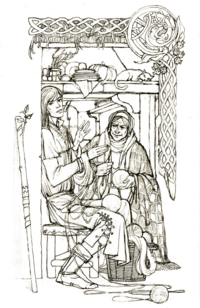 "For a long time, one almost felt that Celtic myth and legend had too much of an influence on American writers of fantasy," she says. "It was as though, in one little corner of literature, the sun had never set on the Celtic Twilight...lovely as far as it went, but it seemed a shame that modern American fantasists were ignoring all of the other remarkable myth and magic traditions that exist in the world. I remember discussing this with other writers and editors in the 1980s. Theoretically, I was in favor of more multicultural fantasy; but in practice, it was hard to imagine how it would work. Fantasy is, paradoxically, both a radically innovative and a highly conservative tradition. The images and tropes of the Celtic world were so pervasive. Writers could rely on a sort of mythic shorthand: cloaks and swords, weirds and geases, bards and harps...they needed no translation, no explanation; the writer could launch right into the story and expect the audience to follow.
"For a long time, one almost felt that Celtic myth and legend had too much of an influence on American writers of fantasy," she says. "It was as though, in one little corner of literature, the sun had never set on the Celtic Twilight...lovely as far as it went, but it seemed a shame that modern American fantasists were ignoring all of the other remarkable myth and magic traditions that exist in the world. I remember discussing this with other writers and editors in the 1980s. Theoretically, I was in favor of more multicultural fantasy; but in practice, it was hard to imagine how it would work. Fantasy is, paradoxically, both a radically innovative and a highly conservative tradition. The images and tropes of the Celtic world were so pervasive. Writers could rely on a sort of mythic shorthand: cloaks and swords, weirds and geases, bards and harps...they needed no translation, no explanation; the writer could launch right into the story and expect the audience to follow.
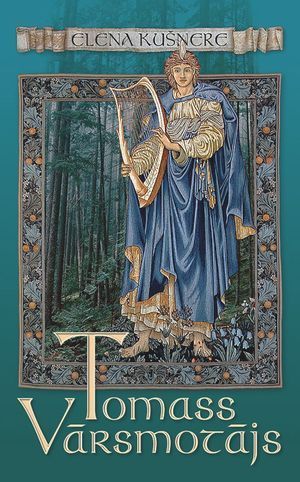 "But fantasy literature does not exist in a vacuum. Just as popular culture, from fairy tales to folk-rock groups like Fairport Convention, Pentangle, and Steeleye Span had made us familiar with Celtic and British folkways, so, now, the popularity of world music -- whether it be healing music from Morocco, women's singing from Bulgaria, or Cajun dances from the bayous of Louisiana -- has aroused a curiosity in the world's traditions; a sense of magic and possibility, even of personal connection with places our families have come from, or places we have dreamed of.
"But fantasy literature does not exist in a vacuum. Just as popular culture, from fairy tales to folk-rock groups like Fairport Convention, Pentangle, and Steeleye Span had made us familiar with Celtic and British folkways, so, now, the popularity of world music -- whether it be healing music from Morocco, women's singing from Bulgaria, or Cajun dances from the bayous of Louisiana -- has aroused a curiosity in the world's traditions; a sense of magic and possibility, even of personal connection with places our families have come from, or places we have dreamed of.
"When I wrote my novel Thomas the Rhymer, I had spent years absorbed in British folkways. Since I was a teenage girl, I had read tales, collected ballads, even sung them. I loved them passionately, finding a deep mystery in their illogic and poesy that was very much like the magic of my favorite fairy tales and children's books. It makes me profoundly uncomfortable these days when I hear someone say, 'I've got Celtic blood in me, so I really love Irish music/Scottish legends/(what have you)...'
"I have no Celtic blood in me. There is nothing in my face or ancestry that is not Jewish. The myth of 'blood rights' has caused a lot of trouble in the 20th century. I was born in America. The Christian-dominated Western culture I have grown up in comes from the British Isles, and I love the English language. If I do need a right to the Celtic material, it is from there that I stake my claim. And so I would beg everyone who enjoys fantasy, myth, and music these days to be respectful of the traditions that appeal to you, but to also consider the myth of the great human cauldron of dreams, from which we all dip our nourishment. It is not only blood that calls to us."
Indeed.
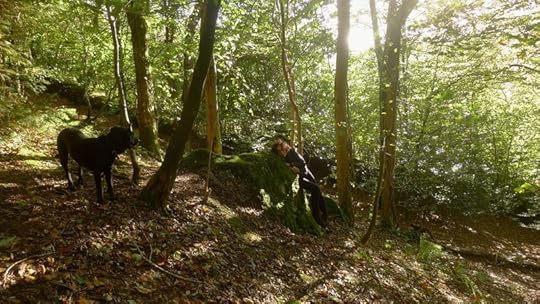 Art above: Cover art and illustrations for four of the American and foreign editions of Ellen's novel Thomas the Rhymer -- by Kinuko Y. Craft, Folda, Janis Jaunarajs, and Thomas Canty. Photographs:the remnants of the Rhymer's Tower in Earlston, in the Scottish Border country, and Ellen & Tilly in Faerieland, 2013.
Art above: Cover art and illustrations for four of the American and foreign editions of Ellen's novel Thomas the Rhymer -- by Kinuko Y. Craft, Folda, Janis Jaunarajs, and Thomas Canty. Photographs:the remnants of the Rhymer's Tower in Earlston, in the Scottish Border country, and Ellen & Tilly in Faerieland, 2013.
The love of poets
From "While the World Sleeps" by Ben Okri (from A Way of Being Free):
"The world in which the poet lives does not necessarily yield up the poetic. In the hands of the poet, the world is resistant. It is only with the searching and the molding that the unyielding world becomes transformed in a new medium of song and metaphor.
"It is not surprising therefore that poets seem to be set against the world. The poet needs to be up at night when the world sleeps; needs to be up at dawn, before the world wakes; needs to dwell in odd corners, where Tao is said to reside; needs to exist in dark places, where spiders forge their webs in silence; near the gutters, where the undersides of our dreams fester. Poets need to live where others don't care to look, and they need to do this because if they don't they can't sing to us of all the secret and public domains of our lives."
"The acknowledged legislators of the world take the world as given. They dislike mysteries, because mysteries cannot be coded, or legislated, and wonder cannot be made into law. And so these legislators police the accepted frontiers of things. Politicians, heads of state, kings, religious leaders, the rich and powerful -- they all fancy themselves the masters of this earthly kingdom. They speak to us of facts, policies, statistics, programs, abstract and severe moralities. But the dreams of the people are beyond them, and would trouble them. The harder realities of the people would alarm them. It is they who have curbed the poets' vision of reality. It is they who invoke the infamous 'poetic license' whenever they do not want to face the inescapable tragedy contained in, for example, Okibo's words, ' I have lived the oracle dry on the cradle of a new generation.' It is they who demand that poetry be partisan, that it take sides, usually their side; that it rises on the backs of causes and issues, their causes, their issues, whoever they may be.
"Our lives have become narrow enough. Our dreams strain to widen them, to bring our waking consciousness the awareness of greater discoveries that lie just beyond the limits of our sight. We must not force our poets to limit the world any further. That is a crime against life itself. If a poet begins to speak only of narrow things, of things we can effortlessly digest and recognize, of things that do not disturb, frighten, stir, or annoy us, or make us restless for more, make us cry for greater justice, make us want to set sail and explore inklings murdered in our youths, if the poet sings only of our restricted angels and in restricted terms and in restricted language, then what hope is there for any of us in this world?"
"The antagonists of poetry cannot win. The world seems resistant but carries within it for ever the desire to be transformed into something higher. The world may seem unyielding but, like invisible forces in the air, it merely waits imagination and will to unloosen the magic within itself."
"The poet as quantum physicist, as healer, as angel and demon of the world cannot afford to disdain the world, cannot feel superior to it any more than the scientist can feel superior to thunder, to mountains, or to the constellations. There are no superiorities of function, only ascendencies.
"Their love shows in the quality of their dreams and their works. The deeper poets feel, the deeper is their exploration. The more we want to reconnect, the more we would follow poets in their quest for impossible transformations. They measure the heroism of the consciousness of any age. It is true when they say that poets are never ahead of their times. It is only we who are far behind ours."
Poets, aye, and also, I believe, the best of our mythic artists too.
 Photographs: In the woods, and on the overgrown woodland boundary wall, at dawn on a chilly spring morning, with stitchwort, primroses, wild orchids, and bluebells. Searching for poetry "in the odd corners."
Photographs: In the woods, and on the overgrown woodland boundary wall, at dawn on a chilly spring morning, with stitchwort, primroses, wild orchids, and bluebells. Searching for poetry "in the odd corners."
April 29, 2015
Mary Moments
"Every now and again if you’re lucky," wrote the late English naturalist Roger Deakin, "exploring a wood, sitting by a river or looking out of a train, you may experience what a friend of mine calls ‘a Mary moment.’ Such minor epiphanies, often apparently unremarkable in themselves, will lodge in your memory and may be recalled in their essentials long afterwards.
"They are the distinctive subjects of the Suffolk painter Mary Newcomb: a flock of goldfinches dispersing, a magpie flying up from a wet road, a football match seen through a hole in an oak leaf eaten by a caterpillar. These are all actual titles of 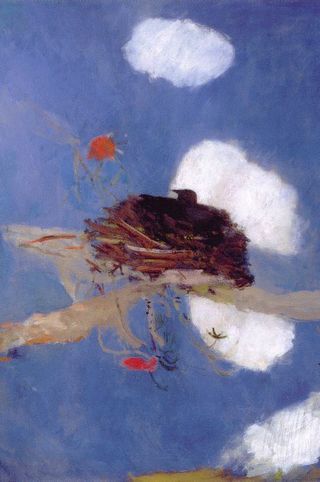 paintings by Mary Newcomb. Such poetical vignettes are essential to the particular effect of these deceptively modest pictures. Mary Newcomb belongs firmly in the greenwood tradition, peering unnoticed from behind leaves like the Green Man at things that are very often half hidden themselves.
paintings by Mary Newcomb. Such poetical vignettes are essential to the particular effect of these deceptively modest pictures. Mary Newcomb belongs firmly in the greenwood tradition, peering unnoticed from behind leaves like the Green Man at things that are very often half hidden themselves.
"In the Newcomb world, people and plants sometimes surreally hybridize...a visual expression of Andrew Marvell’s lines in ‘The Garden’: ‘Annihilating all that’s made/To a green thought in a green shade.' They have a notable affinity with poetry. Mary is an admirer of John Clare, whose words ‘I found my poems in the fields and only wrote down what I saw’ describe very well how she paints, and the connections she notices between, say, pylons and cobwebs, or butterflies and bits of torn paper. Indeed, the notes in her diaries are very often written without punctuation in a style that strongly suggests that of Clare as well as the stream of consciousness she wants to express."
"Unlike most artists," Deakin noted, "Mary keeps not a sketchbook but a notebook or diary. She fills it with handwritten thoughts and observations that often find their way into the work verbatim. ‘Be sure to put it down,’ she writes in one diary entry, ‘be it squirrel in a woodpile, men with white-toed boots working on a mountain railway, caterpillars hanging stiffly and staring from a laurel bush, the magnitude of the stars -- there is no end.’ That reference to the stars inevitably suggests one of the best-known Newcomb pictures, the beautiful watercolor Ewes Watch ing Shooting Stars: three ewes on a clear, cold night, invite you to identify with the animals inside their warm coats. The painting reminds me of Ted Hughes’s poem ‘The Warm and the Cold,’ an evocation of the animal world on a freezing, starry night in terms of the particular form of shelter each one takes, including, by contrast, the ‘sweating farmers’ who ‘Turn in their sleep/Like oxen on spits.’ Newcomb and Hughes share an acute awareness of the minutiae of life in the wild, and a deep, affectionate understanding of the lives of farm animals and all creatures.
ing Shooting Stars: three ewes on a clear, cold night, invite you to identify with the animals inside their warm coats. The painting reminds me of Ted Hughes’s poem ‘The Warm and the Cold,’ an evocation of the animal world on a freezing, starry night in terms of the particular form of shelter each one takes, including, by contrast, the ‘sweating farmers’ who ‘Turn in their sleep/Like oxen on spits.’ Newcomb and Hughes share an acute awareness of the minutiae of life in the wild, and a deep, affectionate understanding of the lives of farm animals and all creatures.
"The people in these paintings seem to be part of the landscape. They do not dominate it, but take their place in it like any other being...Mary’s men often appear in the cloth caps worn by Suffolk farm labourers or fishermen until recently: a badge of belonging to the land or sea. These anonymous figures are in some ways Green Men, emerging through deep layers of foliage. The just-visible Lady in an Unsprayed Field Seen in Passing, an after-image, might be a corn spirit. 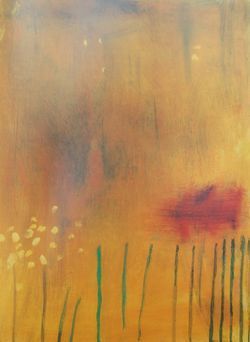 Mary Newcomb seems attracted to paint what is half hidden, invisible even. In The Last Bird Home, the small figure of the bird, in a slight halo of warm amber dusk light, descends into a long smudge of dark-grey hedge we know is crowded with concealed birds, all singing. ‘After a long wet evening,’ Mary wrote while she was working on this picture, ‘the birds must sing. They have to get it out and shout insistently.’ Birds are everywhere in the work, yet they are often half concealed, hard to spot, as in a wood or a hedge. A cock pheasant in a field is actually a half pheasant submerged in grass, and in the diary there is a reference to ‘half men’ as subjects for pictures: ‘half men in hollows, in fields, in dips in the road, in long grass.’ This is how it is in the fields, hedges and woods: things heard but unseen, or glimpsed, partly hidden. Seen collectively as hedgerow or wood, trees are abstracted by nature into a mass of colour and texture. The experience is distinct from the architectural look of a single tree. And this is what you see in a Newcomb painting."
Mary Newcomb seems attracted to paint what is half hidden, invisible even. In The Last Bird Home, the small figure of the bird, in a slight halo of warm amber dusk light, descends into a long smudge of dark-grey hedge we know is crowded with concealed birds, all singing. ‘After a long wet evening,’ Mary wrote while she was working on this picture, ‘the birds must sing. They have to get it out and shout insistently.’ Birds are everywhere in the work, yet they are often half concealed, hard to spot, as in a wood or a hedge. A cock pheasant in a field is actually a half pheasant submerged in grass, and in the diary there is a reference to ‘half men’ as subjects for pictures: ‘half men in hollows, in fields, in dips in the road, in long grass.’ This is how it is in the fields, hedges and woods: things heard but unseen, or glimpsed, partly hidden. Seen collectively as hedgerow or wood, trees are abstracted by nature into a mass of colour and texture. The experience is distinct from the architectural look of a single tree. And this is what you see in a Newcomb painting."
Mary Newcomb grew up in Wiltshire and trained in the sciences, bringing a naturalist's eye to her paintings of the English countryside and country life. She and her husband ran a farm and small pottery in the Waveney Valley, Sussex, while also raising two daughters; her national (indeed, international) success as a painter did not begin until she was in her fifties. She died in 2008 at the age of 86, drawing right up to the end.
One of Mary's daughters, Tessa Newcomb, is now an accomplished painter in her own right. Tessa's work is more illustrative than her mother's, but it too is a love song to the countryside, updating the English folk art tradition in a manner both contemporary and charming. The five lovely paintings below are Tessa's:
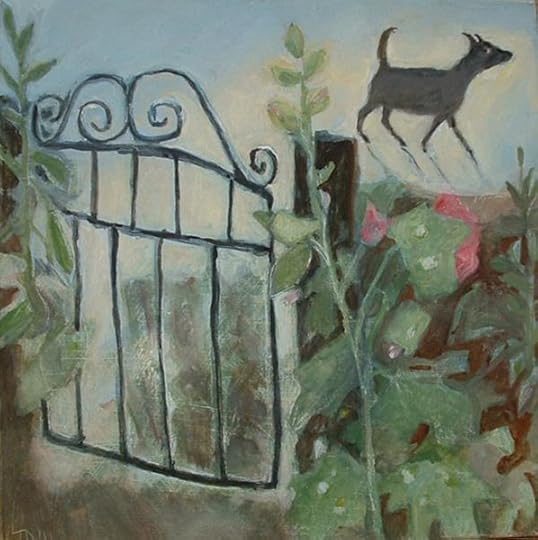 The passage above comes from Wildwood: A Journey Through Trees by Roger Deakin (1943-2006), highly recommended.
The passage above comes from Wildwood: A Journey Through Trees by Roger Deakin (1943-2006), highly recommended.
April 28, 2015
Ripening like the trees
"Perhaps we should strive towards mythological resonances in our lives," suggests Ben Okri (in his essay collection A Way of Being Free). "Among many possible images, a human being can be seen as a tree: We should reach out for more light even as we reach deeper into reality for a more solid hold on the earth. We were not born with one eye, with only one thought in our heads, and with only on direction to travel. When we look out at the world with its multiplicity of astonishing phenomena, do we see that only one philosophy can contain, explain, and absorb everything? I think not. The universe will always be greater than us. Our mind therefore should be like Keats' thoroughfare, through which all thoughts can wander. It should also be a great cunning net that can catch fish of possibility.
"Maybe our minds should be sensitive to the vastness that lies behind all reality, should be open to the winds and whispers of infinity, and should be able -- by inkling and intuition-- to enter the hidden realm of the blazing Tyger, the Robin, the Eagle, the Unicorn, and our mysterious humanity. How can we, in the presence of irreducible being, view life from only one perspective -- the Cheetah's, or the Tyger's, or our own? We have the gift of overview, the tower of Imagination. We can place many perspectives side-by-side, we can even inhabit them simultaneously.
"In art a complex experiment (if fully realized, and regarded as if natural) is but a sign and a prayer to the greater glory and sublimity of our secret estate. It is a celebration of our terrestrial intelligence, our spiritual yearning, and the irrepressibility of our mischief and joy."
"Everything is gestation and then bringing forth," Rainer Marie Rilke reminds us (in his gorgeous Letters to a Young Poet). "To let each impression and each germ of feeling come to completion wholly in itself, in the dark, in the inexpressible, the unconscious, beyond the reach of one's own intelligence, and await with deep humility and patience the birth-hour of a new clarity: that alone is living the artist's life, in understanding and in creating. There is no measuring in time, no year matters, and ten years are nothing. Being an artist means, not reckoning and counting, but ripening like the tree which does not force its sap and stands confidence in the storms of spring without fear that after them may come no summer."
 Paintings & sketch above: "Mother Nature," "Sycamore Fairy With Foxy Friend," and a young tree spirit.
Paintings & sketch above: "Mother Nature," "Sycamore Fairy With Foxy Friend," and a young tree spirit.
Terri Windling's Blog
- Terri Windling's profile
- 708 followers



